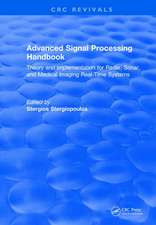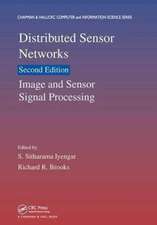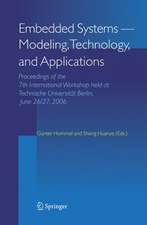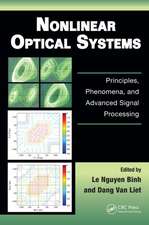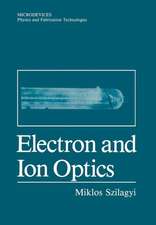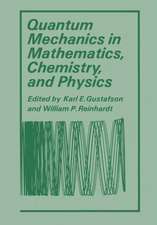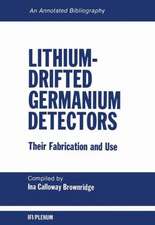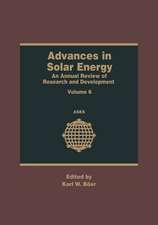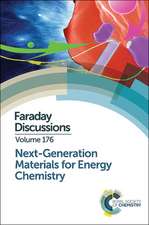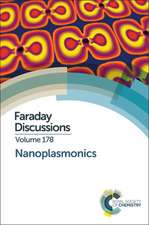Numerical Computation of Electric and Magnetic Fields
Autor Charles W. Steeleen Limba Engleză Paperback – 20 mai 2012
| Toate formatele și edițiile | Preț | Express |
|---|---|---|
| Paperback (3) | 384.31 lei 6-8 săpt. | |
| Springer Us – 20 mai 2012 | 384.31 lei 6-8 săpt. | |
| SPRINGER NETHERLANDS – 8 oct 2012 | 384.31 lei 6-8 săpt. | |
| Springer Us – 23 oct 2012 | 1107.11 lei 6-8 săpt. | |
| Hardback (1) | 1113.09 lei 6-8 săpt. | |
| Springer Us – 29 noi 1996 | 1113.09 lei 6-8 săpt. |
Preț: 384.31 lei
Nou
Puncte Express: 576
Preț estimativ în valută:
73.55€ • 75.88$ • 62.25£
73.55€ • 75.88$ • 62.25£
Carte tipărită la comandă
Livrare economică 05-19 martie
Preluare comenzi: 021 569.72.76
Specificații
ISBN-13: 9781468488593
ISBN-10: 1468488597
Pagini: 240
Ilustrații: XVI, 224 p. 20 illus.
Dimensiuni: 152 x 229 x 13 mm
Greutate: 0.33 kg
Ediția:1987
Editura: Springer Us
Colecția Springer
Locul publicării:New York, NY, United States
ISBN-10: 1468488597
Pagini: 240
Ilustrații: XVI, 224 p. 20 illus.
Dimensiuni: 152 x 229 x 13 mm
Greutate: 0.33 kg
Ediția:1987
Editura: Springer Us
Colecția Springer
Locul publicării:New York, NY, United States
Public țintă
ResearchCuprins
1. Introduction.- 2. Field Properties.- 2.1 Introduction.- 2.2 Maxwell’s Equations in the Dynamic, Quasi-Static, and Static Cases.- 2.3 Polarization and Magnetization.- 2.4 Laws for Static Fields in Unbounded Regions.- 2.5 Integral Representations for Quasi-Static Fields Using the Helmholtz Theorem.- 2.6 Equivalent Configurations.- 2.7 Steady-State Dynamic Problems and Phasor Field Representations.- 2.8 Continuity Conditions of Fields at a Medium Discontinuity.- References.- 3. Problem Definition.- 3.1 Introduction.- 3.2 Field Problem Domains, Source Problem Domains, Interior Problems, and Exterior Problems.- 3.3 Is the Problem Static, Quasi-Static, or Dynamic?.- 3.4 What Field Is To Be Computed?.- 3.5 Is the Problem Two-Dimensional or Three-Dimensional?.- 3.6 The Medium.- 3.7 Boundary Conditions.- 4. Linear Spaces in Field Computations.- 4.1 Introduction.- 4.2 Basis Functions.- 4.3 Shape Functions.- 4.4 Finite Elements and Shape Functions of Global Coordinates in Two-Dimensional Problem Domains.- 4.5 Isoparametric Shape Functions in Two Dimensions.- 4.6 Finite Elements and Shape Functions of Global Coordinates in Three-Dimensional Problem Domains.- References.- 5. Projection Methods in Field Computations.- 5.1 Introduction.- 5.2 Special Linear Spaces in Field Computations.- 5.3 Operators in Field Calculations.- 5.4 Approaches Used in Obtaining Approximate Solutions to Field Problems.- 5.5 Finite Element Method for Interior Problems.- 5.6 Integral Equation Method.- 5.7 Projection Methods.- 5.8 Orthogonal Projection Methods.- References.- 6. Finite Element Method for Interior Problems.- 6.1 Introduction.- 6.2 Formulation of Finite Element Method for Interior Problems.- 6.3 Computation of Linear System for Finite Element Method.- 6.4 Sample Problem.- References.- 7.Finite Element Method for Exterior Problems.- 7.1 Introduction.- 7.2 McDonald-Wexler Algorithm.- 7.3 Silvester et al. Algorithm.- References.- 8. Integral Equation Method.- 8.1 Introduction.- 8.2 Linear and Uniform Media in Continuity Subdomains.- 8.3 Saturable, Nonlinear, and Nonuniform Media in Continuity Subdomains.- 8.4 Numerical Solution of Integral Equations — General Approach.- 8.5 Finite Elements and Basis Functions Used in the Integral Equation Method.- 8.6 Integral Equation Numerical Solution by the Collocation Method.- 8.7 Integral Equation Numerical Solution by the Galerkin Method.- 8.8 Numerical Integration.- 8.9 Sample Problem.- References.- 9. Static Magnetic Problem.- 9.1 Introduction.- 9.2 Interior Static Field Problems.- 9.3 Exterior Static Problems Approximated by Interior Problems.- 9.4 Exterior Magnetic Static Problem.- 9.5 Static Magnetic Field in a Saturable Medium.- References.- 10. Eddy Current Problem.- 10.1 Introduction.- 10.2 Commonly Used Basic Formulations for the Eddy Current Problem.- 10.3 Simple Two-Dimensional Eddy Current Problem.- 10.4 Projection Methods for General Eddy Current Problems.- 10.5 Eddy Current Problem Formulation.- References.- Appendix A Derivation of the Helmholtz Theorem.- Appendix C Integral Expressions for Scalar Potential from Green’s Theorem.
Descriere
Descriere de la o altă ediție sau format:
Since the first edition of this book was published in 1987, there have been several important changes in the state of numerical field computation, as discussed in the Introduction. These changes have motivated the publication of this second edition. As with the first edition, the objective of this second edition is to give the newcomer to field computation the information needed to perform practical field computations. Again, clarity of presentation is given greater emphasis than a high degree of sophistication or the state of the art. And again, the basic concepts of field computation are presented as well as the commonly used algorithms. Several persons have provided much valuable information for this second edition. I wish to thank Professor Giorgio Molinari of the University of Genoa, Italy for advice regarding adaptive mesh generation; Dr. C. R. E. Emson of Vector Fields, Ltd., England and Dr. John Brauer of McNeal-Schwendler Corp. for their advice on transient eddy current computation; and Dr. Zoltan Cendes of Ansoft Corp. for information about their adaptive mesh generator. Again, I would like to acknowledge the support for this second edition by my wife, Candace. Again, I could not have written this book without her support.
Since the first edition of this book was published in 1987, there have been several important changes in the state of numerical field computation, as discussed in the Introduction. These changes have motivated the publication of this second edition. As with the first edition, the objective of this second edition is to give the newcomer to field computation the information needed to perform practical field computations. Again, clarity of presentation is given greater emphasis than a high degree of sophistication or the state of the art. And again, the basic concepts of field computation are presented as well as the commonly used algorithms. Several persons have provided much valuable information for this second edition. I wish to thank Professor Giorgio Molinari of the University of Genoa, Italy for advice regarding adaptive mesh generation; Dr. C. R. E. Emson of Vector Fields, Ltd., England and Dr. John Brauer of McNeal-Schwendler Corp. for their advice on transient eddy current computation; and Dr. Zoltan Cendes of Ansoft Corp. for information about their adaptive mesh generator. Again, I would like to acknowledge the support for this second edition by my wife, Candace. Again, I could not have written this book without her support.


